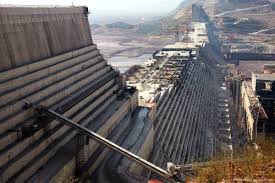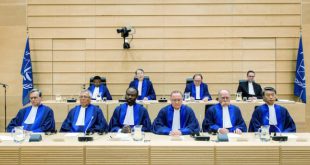الجوانب القانونية لشرعية بناء سد النهضة في ضوء القانون الدولي
د. سحر جمال عبد السلام زهران
أستاذ مساعد القانون الدولي، مصر
هذه الورقة نوقشت في المؤتمر العلمي الأول لكلية الدراسات الاقتصادية والعلوم السياسية جامعة بنى سويف مارس 2018، بعنوان مواجهة التحديات السياسية والاقتصادية في الأطر الإقليمية والدولية
الجوانب القانونية لبناء سد النهضة في ضوء أحكام القانون الدولي
مقدمة
منذ منتصف القرن الماضي، أجرت إثيوبيا دراسات لبناء سدود كبيرة على نهر النيل. في ظل غياب السياسة الخارجية المصرية خلال ثورة يناير 2011، تم استغلال الفرصة لتحقيق أهدافها من خلال غطاء سياسي ممثلة في مبادرة حوض النيل وفي انتهاك للاتفاقيات الدولية التي تحكم حصص دول حوض النيل في المياه، وقعت مصر والسودان وإثيوبيا اتفاقية الخرطوم في عام 2015 و “إعلان مبادئ” بشأن تقاسم نهر النيل وسد النهضة الإثيوبية. يتضمن الاتفاق عشرة مبادئ أساسية تتفق مع القواعد العامة للقانون الدولي الذي يحكم الأنهار الدولية. سبق أن عارضت مصر بناء أكبر سد من نوعه في إفريقيا، لأنه سيقلل حصتها من مياه النهر. وبالتالي، فإن قضية المياه هي واحدة من أهم وأخطر القضايا التي تواجه مصر في الوقت الحاضر، وكذلك في المستقبل، ومن الخطير على عذيبة بناء شبكة من السدود على النيل الأزرق دون اعتبار لمصالح مصر والسودان كعقارات.
أولاً: مشكلة البحث:
مشكلة البحث في أزمة إثيوبيا في بناء السد وما يترتب عليه من انتهاك إثيوبي لقواعد الاتفاقيات المبرمة بين دول حوض النيل بشأن توزيع الحصص المائية للنهر في انتهاك لهذه الاتفاقيات، مما يشكل تهديدًا على الأمن المائي المصري وجفاف النيل وزيادة التصحر في مصر، بمعنى القانون الدولي بجريمة الإبادة الجماعية وعواقب تراكم هجرة السكان ووضعهم في ظروف مأساوية بسبب ندرة المياه.
ثانياً: أهداف البحث؛ دور القانون الدولي العرفي في التزام إثيوبيا بالاتفاقيات الموقعة بين دول حوض النيل في ضوء رفض إثيوبيا الالتزام بهذه الاتفاقيات لإهدار حقوق المياه في مصر بموجب هذه الاتفاقيات.
– فعالية الوسائل الودية وغير الصديقة لحل النزاعات من أجل تجنب مخاطر بناء سد النهضة تحديد المسؤولية القانونية التي تتحملها حكومة إثيوبيا عن الآثار المدمرة لنهضة مصر على الإبادة الجماعية لشعب مصر في ضوء ندرة المياه والانتهاء من بناء السد والتصحر والتهجير العرقي من السكان ، لا سيما كجريمة إبادة جماعية على النحو المنصوص عليه في الجرائم الدولية التي تندرج تحت اختصاص المحكمة الجنائية الدولية.
ثالثا: منهجية البحث
تستخدم الدراسة طريقة تحليل النظام الدولي من خلال بيان انتهاك اتفاقيات المياه الدولية المبرمة بين دول حوض النيل حول الأمن المائي لمصر كمسألة وجود لمصر وطريقة الاستقرائي والاستنتاجي
رابعاً: الخطة البحثية
المبحث الأول: الأساس القانوني لحقوق المياه في مصر في ضوء قواعد القانون الدولي
أولاً: الاتفاقيات الدولية التي تحكم حقوق مصر في استخدام مياه النيل
أولاً: الاتفاقيات الموقعة بين دول حوض النيل خلال الفترة الاستعمارية
ثانياً: اتفاق العتيبي
ثانياً: الجوانب القانونية للاتفاقيات الموقعة بين دول حوض النيل
أولاً: الصلاحية القانونية للاتفاقات الموقعة ومدى التزام إثيوبيا بها
ثانياً: تثبت قواعد الميراث الدولي سلطة مصر على الالتزام بالاتفاقيات الموقعة
المطلب الثالث: الطبيعة العينية لاتفاقيات الأنهار الدولية
المبحث الثاني: شرعية بناء سد النهضة في إطار مبادئ القانون الدولي
المطلب الأول: اتفاقية الخرطوم 2015 في ضوء قواعد القانون الدولي
o دور العرف الدولي في تفسير اتفاقية الخرطوم ، 23 مارس 2015
ثانياً: شرعية أحكام اتفاقية الخرطوم في إطار مبادئ القانون الدولي
مبدأ حسن النية في تنفيذ المعاهدات الدولية ، مبدأ الاستخدام العادل والمعقول مبدأ التنمية والتكامل الإقليمي والتنمية المستدامة.
ثالثًا: اتفاقية الدراسات الفنية لعام 2016 لسد النهضة
المطلب الثاني: المسؤولية القانونية لإثيوبيا عن بناء سد النهضة
أولاً: مبدأ الإخطار المسبق وترتيب المسؤولية القانونية.
ثانياً: مبدأ عدم التسبب بأضرار كبيرة
ثالثا: الاستخدام العادل والمنصف للمياه
رابعاً: مبدأ التعاون في ملء أول خزان
المبحث الثالث: أثر بناء سد النهضة على المياه الوطنية المصرية
المطلب الأول: تداعيات بناء السد على الأمن القومي لمصر
أولاً: مصر والحروب المائية بموجب أحكام القانون الدولي أثر السدود الإثيوبية على التصحر في مصر
المطلب الثاني: أزمة سد النهضة وطرق تسوية النزاعات
– أولاً: الخطوات التي يجب على مصر اتباعها في مخاطبة المجتمع الدولي لتعريفها بعناد إثيوبيا
ثانياً: كيفية التعامل مع أزمة سد النهضة في ضوء القواعد الدولية لحل النزاعات
التحكيم الدولي
الخيار العسكري
ثالثا: اعتماد مجلس الأمن الدولي
Legal Aspects Of The Construction Of Al Nahda Dam In The Light Of The Provisions Of International Law
An introduction
Since the middle of the last century, Ethiopia has been conducting studies to build large dams on the Nile River. In the absence of Egyptian foreign policy during the January 2011 revolution, the opportunity to achieve its objectives has been exploited by a political cover represented in the Nile Basin Initiative and in violation of international agreements governing the shares of the Nile Basin countries In the waters, Egypt, Sudan and Ethiopia signed the Khartoum Convention in 2015 and a “Declaration of Principles” on the sharing of the Nile River and the dam of the Ethiopian Renaissance. The agreement includes ten basic principles consistent with the general rules of international law governing international rivers. Egypt has previously opposed building the largest dam of its kind in Africa, because it would reduce its share of river water. Hence, the issue of water is one of the most important and serious issues facing Egypt at the present time, and also the future, and it is dangerous for Atheebba to build a network of dams on the Blue Nile without regard to the interests of Egypt and Sudan as estates.
First: The Problem of Search :
The problem of research in the crisis of Ethiopia in the construction of the dam and the ensuing Ethiopian violation of the rules of agreements between the Nile Basin countries on the distribution of water quotas of the river in violation of these agreements, which poses a threat to Egyptian water security and drought of the Nile and increase desertification in Egypt, In the sense of international law of the crime of genocide and the consequences of the accumulation of the migration of the population and put them in tragic conditions because of water scarcity.
Second: Research Objectives;
-The role of the role of customary international law in the commitment of Ethiopia to the agreements signed between the Nile Basin countries in light of Ethiopia’s refusal to abide by these agreements to waste Egypt’s water rights under these agreements
-The effectiveness of friendly and non-friendly means of resolving disputes in order to avoid the dangers of building Al-Nahda dam
Determining the legal responsibility assumed by the Government of Ethiopia for the devastating effects of the renaissance of Egypt on the genocide of the people of Egypt in light of the scarcity of water and the completion of the construction of the dam and the desertification and ethnic displacement of the population, especially as a crime of genocide as stipulated in the international crimes that fall under the jurisdiction of the International Criminal Court.
Third: Research Methodology
The study uses the method of analysis of the international system by a statement of the violation of the international water agreements held between the Nile basin countries on the water security of Egypt as a matter of existence for Egypt and the method of inductive and deductive
Fourth: Research Plan
The first topic: The legal basis for Egypt’s water rights in light of the rules of international law
First: International agreements governing the rights of Egypt to use the Nile water
– First: Agreements signed between the Nile Basin countries during the colonial period
-Second: the agreement of Otaibi
Second: Legal aspects of the agreements signed between the Nile Basin countries
-First: the legal validity of the signed agreements and the extent of Ethiopia’s adherence to them
Second: The rules of international inheritance prove Egypt’s authority to adhere to the signed agreements
Third requirement: The in-kind nature of international river conventions
The second topic: The legitimacy of building Al-Nahda dam in the framework of the principles of international law
First requirement: Khartoum Convention 2015 in light of the rules of international law
o The role of international custom in interpreting the Khartoum Convention, March 23, 2015
o Second: the legitimacy of the provisions of the Khartoum Convention in the framework of the principles of international law
The principle of good faith in the implementation of international treaties, The principle of fair and reasonable use
The principle of development, regional integration and sustainable development.
Third: The Technical Studies Agreement 2016 of the Renaissance Dam
The second requirement: the legal responsibility of Ethiopia for the construction of Al Nahda Dam
First: the principle of prior notification and arrangement of legal liability.
Second: the principle of not causing significant damage
Third: Fair and rational use of water
Fourth: the principle of cooperation for the first filling of the tank
The third topic: The impact of the construction of Al Nahda Dam on Egypt’s water national
The first requirement: the repercussions of building the dam on the national security of Egypt
First: Egypt and water wars under the provisions of international law Impact of Ethiopian dams on desertification in Egypt
The second requirement: the crisis of the Dam of Renaissance and the methods of settling disputes
– First: the steps that Egypt must follow in addressing the international community to define it with Ethiopia’s obstinacy
-Second: how to deal with the crisis of the Renaissance Dam in the light of international rules for resolving disputes
International Arbitration
Military option
-Third: the adoption of the UN Security Council
لتحميل الدراسة كاملة: الجوانب القانونية لشرعية بناء سد النهضة في ضوء القانون الدولي
 arabprf.com ملتقى الباحثين السياسيين العرب _ عرب برف
arabprf.com ملتقى الباحثين السياسيين العرب _ عرب برف





